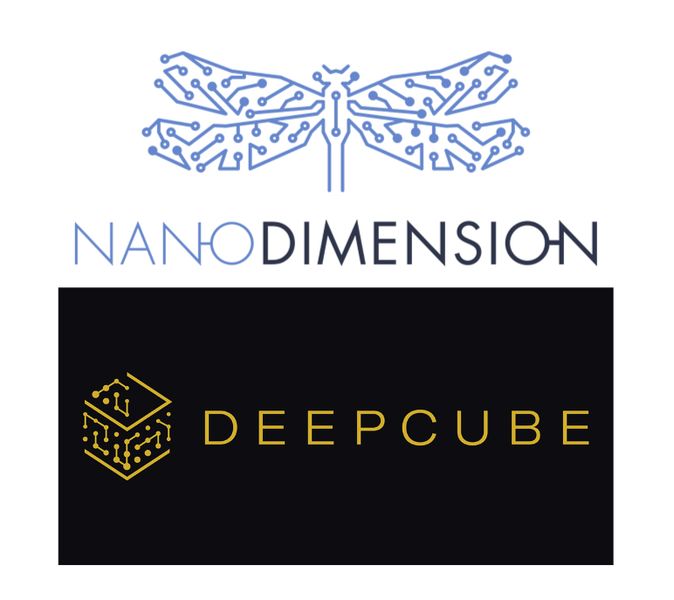
Nano Dimension has signed an agreement to acquire DeepCube.
Nano Dimension is a manufacturer of 3D printers focused on printed circuit boards. This is unlike the more general purpose 3D printers we most frequently write about, but it is a 3D printer nonetheless. You might be surprised to know that Nano Dimension is among the highest valued 3D printer companies in the industry, according to our weekly stock price analysis.
But what about DeepCube? They are an Israeli company founded in 2016 that focuses on machine learning and AI. They explain their goal:
“DeepCube focuses on research and development of deep learning technologies that result in improved real-world deployment of AI systems. The company’s numerous patented innovations include methods for faster and more accurate training of deep learning models, and drastically improved inference performance. DeepCube’s proprietary framework can be deployed on top of any existing hardware in both datacenters and edge devices, resulting in over 10x speed improvement and memory reduction. DeepCube provides the only technology that allows efficient deployment of deep learning models on intelligent edge devices.”
Interesting, but what does this have to do with 3D printing PCBs? It seems that Nano Dimension has big plans to leverage this capability. Nano Dimension’s CEO Yoav Stern is concerned with solving the current problem of electronic chip shortages. He explains:
“Similar supply chain issues, as described recently in the public media in relation to the semi-conductor industry, are hovering over the printed circuit board fabrication and assembly (PCB/PCBA) industries (approximately $65-70 billion in size for fabrication1, and almost an order of magnitude larger for assembly). Those segments are even more subject to margins pressure due to the Far East low labor cost and ‘non-free-market’ effects on the capital intensity and pricing mechanisms. Moreover, the PCB/PCBA industry is directly affected by the issues of the chip-components shortage. Nano Dimension’s vision is to establish ‘INDUSTRY 4.0’ solutions, which entail building an AI/ML ‘distributed digital fabrication application’ rather than just building machines as capital equipment. The ‘AI/ML/DL Distributed Electronic Fabrication Application’ will enable a totally environmentally and ecologically friendly digital control of the supply chain for Hi-PEDs (High-Performance-Electronic-Devices), or very high performance AME-3D-PCBs.”
What does that mean? It’s a bit unclear, but it would seem that Nano Dimension is shifting their focus to an application layer above their equipment, and using DeepCube’s AI to power it in some unspecified manner.
Networking of machines is always a powerful concept, and Nano Dimension believes they can do better than merely connecting devices, as the DeepCube tech appears to make that process significantly more efficient.
I looked at DeepCube’s products in an attempt understand what might be going on here, and learned that the company has two basic products: CubeIQ and CubeEngine.
CubeIQ is a highly efficient system for training AI models. Training is a typically laborious process of repeatedly exposing a neural network to examples so that it can gradually learn to identify correct answers. The neural network can learn arbitrary knowledge, depending on the data presented.
CubeEngine is a system that runs a trained AI model as produced by CubeIQ. It’s claim to fame is its lightweight design and high speed.
Basically the acquisition will allow Nano Dimension to train and deploy AI capabilities to their 3D printers.
I suspect one of the functions will be to provide increased quality control during 3D printing. The sensor data produced during prints could be fed in real time to the AI system, which then could make appropriate adjustments to counteract anything going awry. This could dramatically increase the quality and reliability of prints.
That increased quality and reliability could be one of the keys to unlocking access to the Inudstry 4.0 manufacturing environments that Nano Dimension (and others) would very much like to address.
This is a very interesting strategic step by Nano Dimension, and it is one that other 3D printer manufacturers should consider, given the quality control is one of the most important factors considered by industry today.
Via Global Newswire, Nano Dimension and DeepCube
